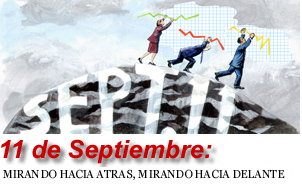“We’re kind of like a healthy person who got hit by a car. Basically we’re healing but it’s been slow,” says professor Andrew Metrick. “We face a lot more uncertainty than before. We could still get an infection.” The good news, Metrick adds, is that the year has passed without another terrorist attack. “Corporate scandals, while they don’t happen every year, do happen every generation. Troubling as they are, they are less troubling than terrorism. Compared to last September, I believe people would say they are less worried.”
Anatomy of a Down Market
September Selloff



